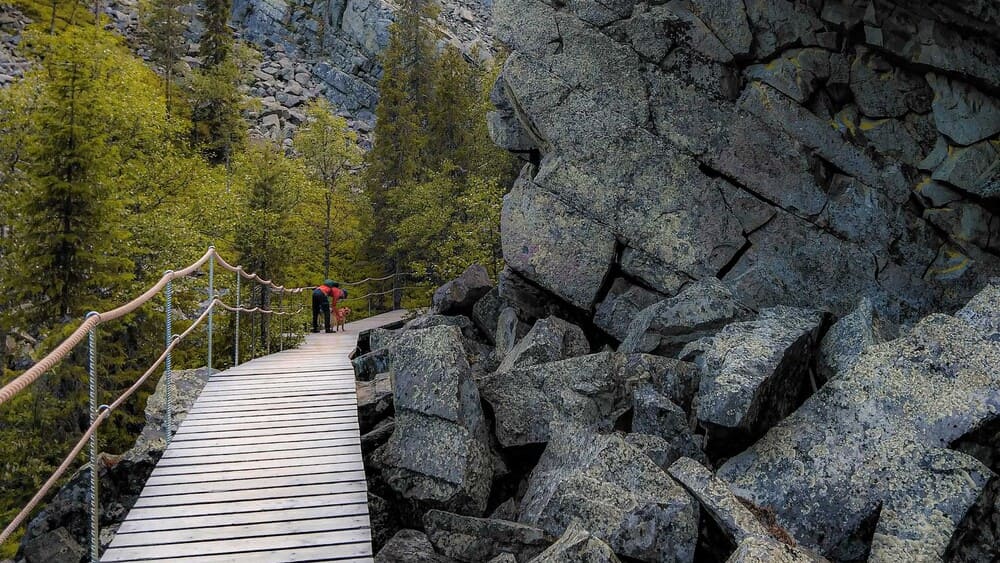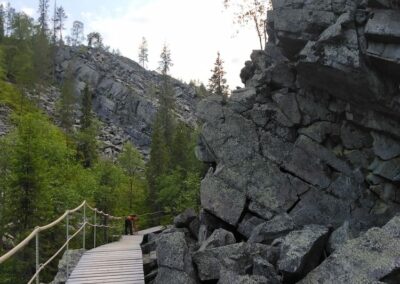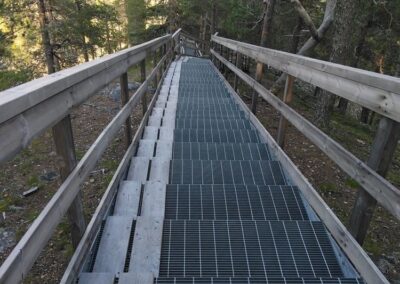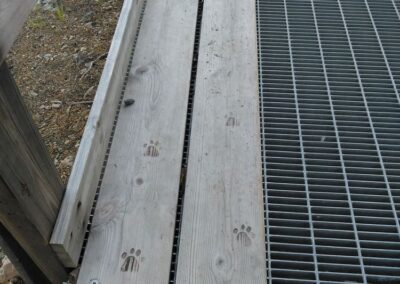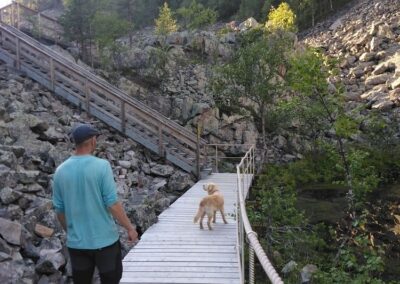Basic info
Country:
Area:
Population:
Density:
Summary:
References:
Keywords
Gallery
Embracing nature for all, where accessibility meets sustainability and cultural respect.
Issues Addressed
The primary challenge was creating an accessible nature trail in a rugged fell environment while preserving the area’s natural beauty and ecological integrity. The project aimed to provide equal access to nature experiences for individuals with varying mobility needs, including wheelchair users, families with young children, and those with sensory disabilities. Additionally, it sought to balance accessibility with the preservation of the authentic wilderness experience that draws visitors to Lapland’s unique landscape.
Approaches and Solutions
The Accessible Wilderness Trail project in Finland can be further exemplified by the case studies of Isokuru and Aittakuru gorges in Lapland, which showcase unique opportunities and challenges in developing accessible nature trails in rugged landscapes. Isokuru, Finland’s deepest gorge, presented a significant challenge due to its steep terrain and rocky surfaces. The project aimed to make this spectacular site accessible while preserving its natural beauty. The solution involved installing wooden walkways and metal stairs, allowing visitors to safely navigate the gorge. This approach not only improved accessibility but also protected the fragile ecosystem from foot traffic. Aittakuru, another impressive gorge, offered a different opportunity. Here, the project focused on creating an accessible viewpoint that showcases the gorge’s beauty without requiring visitors to navigate challenging terrain. The result is a wheelchair-accessible platform providing panoramic views of the gorge and surrounding fell landscape. Both sites hold cultural significance, with Isokuru being part of the sacred sites of Sámi people. The project had to balance accessibility with respect for these cultural values, ensuring that improvements did not diminish the sites’ spiritual importance.
Actors and Stakeholders
The development of accessible trails at Isokuru and Aittakuru involved key stakeholders including Metsähallitus Nature Services, local municipalities, and the Sámi Parliament, ensuring cultural preservation. Disability rights organizations provided expertise on inclusive design, while local tourism boards recognized the economic potential of increased accessibility. Construction companies specialized in challenging terrains facilitated implementation, and diverse user groups contributed feedback during testing. This collaborative approach ensured the trails met the needs of various visitors while respecting the area’s natural and cultural heritage.
Challenges and Opportunities
The accessible nature trail project at Isokuru and Aittakuru presented unique challenges and opportunities in Lapland’s rugged landscape. Primary challenges included navigating extreme Arctic terrain, preserving fragile ecosystem integrity, and maintaining infrastructure in harsh climatic conditions. Cultural sensitivity towards Sámi sacred sites added complexity to trail development. Opportunities emerged through innovative design solutions that balanced accessibility with environmental conservation. The project opened new tourism possibilities for people with mobility limitations, potentially increasing regional economic activity. By creating inclusive trails, the initiative demonstrated Finland’s commitment to universal nature experiences, showcasing how challenging landscapes could be made accessible without compromising their inherent natural beauty. The collaborative approach among stakeholders transformed potential obstacles into creative engineering and design solutions, ultimately expanding nature tourism’s reach and inclusivity in one of Europe’s most pristine wilderness regions.
Outcomes and Lessons Learnt
The Kesänkijärvi Trail project has successfully created a more inclusive outdoor experience in one of Finland’s most beautiful natural settings. Visitors with diverse mobility needs can now enjoy the majestic fells, encounter local wildlife like the moon bird, and experience the serene ambience of the lake. Key outcomes include increased accessibility to a previously challenging natural environment, allowing a broader range of visitors to experience Lapland’s unique landscape. Enhanced visitor facilities, including an accessible amphitheatre and viewing platforms, improve the overall experience for all visitors.
The comprehensive planning that considers the entire visitor journey, from parking areas to viewpoints and rest facilities was important. The project needed to assess and improve accessibility features, as some challenges may only emerge from user feedback and experience. Incorporating educational elements into accessible trails improved the overall visitor experience. Accessible nature trails can act as catalysts for wider debates on inclusive tourism and environmental protection.
In conclusion, the Isokuru and Aittakuru Trail project represents a significant step towards making Finland’s natural wonders accessible to all. While challenges remain, the project serves as a valuable model for other regions looking to develop inclusive outdoor recreation opportunities. It demonstrates that with careful planning and a commitment to universal design principles, even rugged wilderness areas can be made accessible, allowing everyone to experience the beauty and tranquillity of nature.

